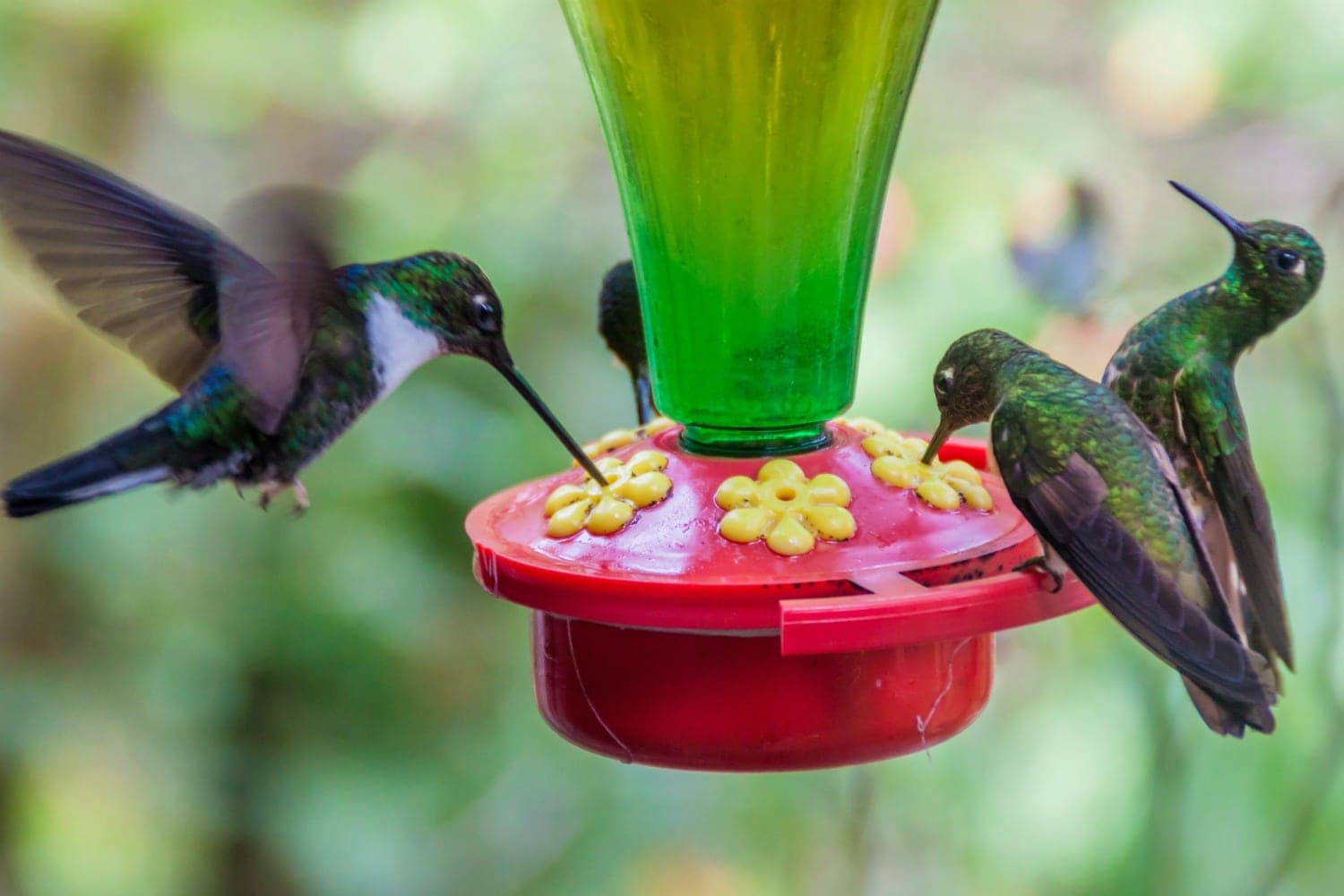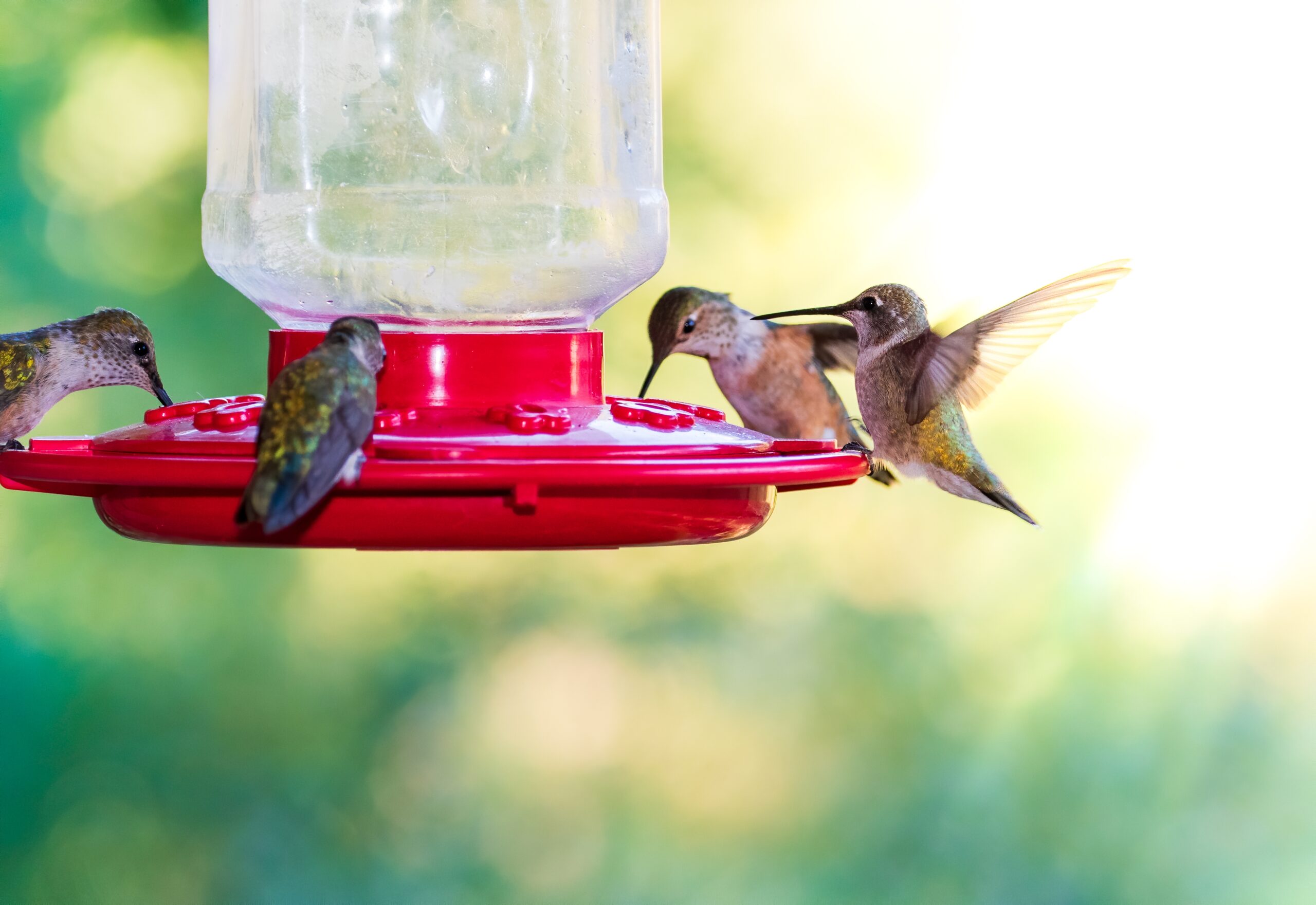Overview
Hummingbirds are amazing tiny creatures characterized by the high number of wingbeats, shiny feathers, and hovering. Nectar is by far one of the most effective ways of drawing these beautiful birds towards your backyard. Although you can purchase nectar at stores, homemade nectar using a hummingbird feeders recipe is cheaper besides being safe to the birds.
We will take you through all you need to know about hummingbird feeder recipes, ingredients, preparation, feeder maintenance and how to attract more hummingbirds.
Why Make Your Own Hummingbird Feeder Nectar?
When you make your hummingbird nectar you are in control of what goes in it so you know it is not filled with harmful additives. These are some of the best reasons as to why you should make your own:
- Cheaper: The cost of homemade nectar is very low as compared to the commercial one.
- Healthy and natural: You will not need to concern yourself with colorants and preservatives or chemicals.
- Rapid and easily made: It only takes just a few minutes to make.
- More environmental: Reusable feeders cut down waste in place of one time containers.
The Classic Hummingbird Feeder Recipe
The perfect nectar blend is the one that resembles natural sugar present in flower nectar. This ratio, which is simple, is advised by ornithologists and bird conservationists.
Ingredients:
- 1 cup white granulated sugar
- 4 cups clean water (preferably filtered or boiled)
Instructions:
- Heat the water by boiling it for 1-2 minutes to remove impurities.
- Take off the heat and put in the sugar and stir till it is dissolved.
- Have the nectar at room temperature.
- Put the feeder with the solution into your feeder.
- Put any unused nectar into a sealed container to refrigerate for up to one week.
This 1:4 sugar-to-water ratio closely matches the natural nectar hummingbirds love.
Why You Shouldn’t Use Red Dye or Honey
Most commercial nectars are colored red, yet this is unneeded and probably harmful. The red on the feeder is sufficient to attract the hummingbirds, although hummingbirds are also attracted to the color red, in general.
Red Dye Risks:
- Maybe petroleum based chemicals.
- Associated with tumors and organ damage in animal laboratory experiments.
- Weaker the hummingbird immunity.
Honey and Other Sugars:
- Honey may turn bad fast and propagate fatal fungus.
- Iron is found in brown sugar and molasses, and this is poisonous to hummingbirds.
- Artificial sweeteners contain no energy and should not be consumed at all.
Stick to plain white sugar to ensure your nectar is safe and beneficial.

How Often to Change Hummingbird Nectar
Keeping your feeder clean and fresh is just as important as making the right nectar.
Change Nectar:
- Every 2 days in hot weather (80°F / 27°C and up).
- Every 4–5 days in cooler weather.
- Sooner if you see cloudiness or mold.
Signs the Nectar Has Gone Bad:
- Cloudy appearance
- Fermented or sour smell
- Black mold on feeder ports
The rotten nectar may end up infecting the humming birds or even killing them, never taking chances and changing regularly.
How to Clean Your Hummingbird Feeder
To prevent mold and bacteria, clean your feeder every time you refill it.
Cleaning Steps:
- Pour out surplus nectar.
- After that, wash in warm water and a weak soap solution or vinegar (1 part vinegar to 4 parts water).
- Wash with a little brush the feeding ports and corners.
- Wash completely to drain out all the soap or vinegar.
- Airmail before refilling.
Never use bleach or heavy duty cleaners, they will leave deposits that are detrimental.
Best Types of Feeders for Homemade Nectar
There are several styles of hummingbird feeders, but the two most popular are:
1. Bottle Feeders:
- Upright design with ports at the base.
- Often glass or plastic.
- Hold more nectar but can be harder to clean.
2. Dish or Saucer Feeders:
- Horizontal design with nectar reservoir below the ports.
- Easier to clean and fill.
- Generally attract fewer bees and wasps.
Select a feed feeder which is disassembled and cleaned easily. Red feeders are chosen as the color will attract the hummingbirds.
Where to Hang a Hummingbird Feeder
Placement matters if you want hummingbirds to visit frequently.
Tips for Placement:
- Hang in a shady or semi shady place to inhibit fermentation.
- Put them close to plants they adore, such as saliva or bee balm.
- Avoid bees and ants, use ant moats and bee guards.
- Install it at the height where it is easy to monitor and have it cleaned.
If you have multiple feeders, space them out to reduce territorial behavior.

How to Attract More Hummingbirds
Just making nectar is a great start, but here’s how to keep them coming back:
Use Multiple Feeders:
- Spread them around your yard.
- Reduces competition between birds.
Add Native Plants:
- Choose nectar rich plants like trumpet vine, fuchsia, zinnias, and columbine.
- These provide natural food sources and shelter.
Avoid Pesticides:
- Chemicals kill the insects hummingbirds also eat.
- Pesticides can poison nectar or feeder surfaces.
Provide Water:
- Offer a misting fountain or shallow birdbath.
- Hummingbirds love to bathe and drink.
Fun Facts About Hummingbirds
- Hummingbirds are able to hover, fly back and even upside down.
- Their metabolism is very fast, indeed, they consume half of their weight in sugar every day!
- Others transverse distances in the thousands of miles such as the Ruby throated Hummingbird.
- Their rate of beating their wings is up to 80 times a second.
All this and more requires that you feed the hummingbirds on your homemade nectar.
Common Mistakes to Avoid
Even well-meaning bird lovers make errors. Avoid these common mistakes:
- Using red dye in nectar
- Leaving nectar in the feeder too long
- Neglecting to clean the feeder
- Using sugar substitutes or honey
- Ignoring mold or fermentation signs
Staying regular and hygienic is the most appropriate approach to maintain your hummingbird associates in shape and sound.
Final Thoughts
Creating your own hummingbird feeder recipe is one of the best efforts you can use to make these small birds do well. It is also cheap, simple and healthier to the birds compared to the commercial ones. With a one-to-four ratio of sugar to water and clean feeders and the exclusion of dangerous additions, you will have a safe and nutritious habitat of hummingbirds.
Begin this season, and have all the buzzing colorful visitors to relish. Happy birdwatching!

